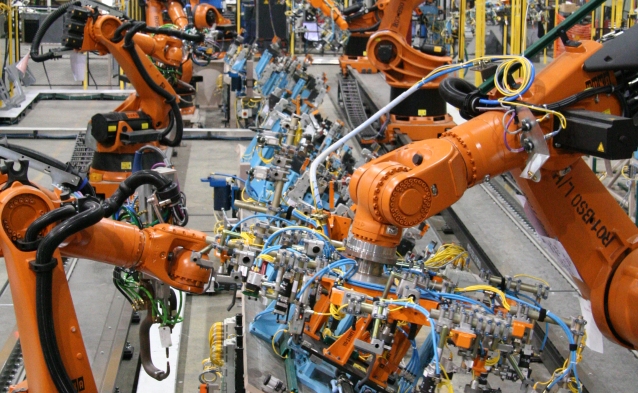Workforce 4
Workplace Safety: Cutting Down Catastrophe
In as much as the business gurus might have convinced us of the benefits of tackling our working life with a battlefield mindset, it still stands to reason that nobody would consider a cracked spine ‘all in a day’s work’, nor should they ever. Today’s litigious society has made the aftermath cost (medical bills, court fees, and general disruption) of preventable workplace accidents almost negligible when viewed in comparison with the cost of investing in preventative measures. Here are some tried and true suggestions you would always do well to implement.
-
Knowing is half the battle
Workplace safety training and education should be a cornerstone of every organizational personnel doctrine. A well-formulated safety manual should read like a do-it-yourself guide; simple, straightforward, and explicitly clear, not leaving any room for personal interpretation. Training exercises should be undertaken regularly just to ensure everyone on the team understands and internalizes the instructions therein.
-
No autopilot
In a good number of court disputes resulting from workplace incidences and accidents, the classic defense on the employer’s part has been to attribute the accident to the employee’s absent-mindedness, or general lack of awareness. As flimsy a defense as it may seem, being inherently difficult to prove one way or another, it raises a pertinent and valid aspect of workplace safety – the employee’s presence of mind.
Depending on the industry and workplace settings, various methods have been employed in efforts to aid employees in maintaining high levels of awareness and engagement as they go about their tasks; shorter but more frequent breaks; rotation of duties to forestall repetition-induced fatigue; standing workstations; background music and various other measures. The goal simply is to have workers’ minds constantly and consistently present and alert.
-
Talk it out
A healthy communication culture is the hallmark of every successful organizational setup. Safety-wise, this comes into play in a big way. Whenever someone spots a colleague infringing upon one of the safety directives, it should be automatically communicated to them in a manner that would contribute to the overall safety of everyone involved, regardless of the respective positions of the parties involved.
A workplace safety culture should treat the entire organization as one body – injury to the most minor of functionaries will interfere with the operations of the entire body, and may be severe enough to destroy the entire organism.
Workplace safety is a perennially sore topic in the world of business. The demoralizing effects of injuries befalling colleagues in the workforce have long been acknowledged and this makes investments of time and resources in their prevention infinitely worthwhile. It’s just good business.
Cornell Study Shows Women Behind on Skill Training
In working-class towns, men find it easy to join the workforce as manual laborers and machinists. Cornell university research shows that the wide pay gap and lack of work pushes women out of blue-collar jobs.
Vocational education schools versus prep courses for college showed a male preference for vocational training, and therefore, a greater likelihood to find better-paid blue-collar jobs upon graduation, shows the Cornell study published in the American Sociological Review.
Touching upon the pay gap for women in blue-collar jobs – it can be as high as 22% less than their male counterparts. This is a significantly wider gap than that in white-collar jobs or service-industry positions shows the same study. The gender gap in employment and wages was more prominently visible in young people from blue-collar communities who completed high school.
In many ways, blue-collar jobs are still just as biased towards men as they were in the 50s. The condition of the female workforce in towns where jobs are mostly concentrated on construction and manufacturing is sharply distinguished from that of women over the U.S. generally, where women have a greater likelihood for going to college than men.
These communities are struggling to fill in the large amount of production jobs that need to be filled. More than 3.5 million vacancies across the U.S. have been estimated over the next 10 years. The present lack of skilled labor could cause a deficit in filling 2 million of those positions, as was predicted by Deloitte and the Manufacturing Institute.
This shows the need for educators to actively address these gender issues in discussions about vocational training while paving the way for college. Today, statistics show a preference for skilled jobs over advanced math. While men can definitely benefit from college prep classes, encouraging women to opt for vocational courses can do much for the economy in the future.
Top Megatrends in Manufacturing
A new era has dawned in the manufacturing industry which is largely driven by digitalization, information technology and customization. These changes can be defined by several megatrends that are sweeping across the manufacturing footprint.
The pros and cons of the Digital Age
Information technology, along with other emerging technologies, are causing a dynamic and continuous change in the ways things get done. For example, smartphones today are miniaturized, have high processing capabilities and are way cheaper than their counterparts from the 60s.
On one hand while this can be a good thing, it also has the power to disrupt whole industries and reshape the workforce like the extinction of weavers and camera film makers.
But new technology and innovation brings with it new processes and advanced business models. For example, 3D printing is enabling the mass production and customization of products by small firms. Other emerging technologies to look out for include nanotechnology.
Big Data and Real-Time Information
The capacity to process large volumes of data for economic purposes has transformed customer care across retail and finance sectors. Big Data also plays a crucial role in manufacturing, with the fast-track incorporation of information technology. This will lead to more accurate forecasting and analysis of plant performance.
Big Data is buoyed by open platforms and crowdsourcing, which enable customer interaction like never before. The design, distribution and service is slated to get a complete overhaul with manufacturers becoming more knowledgeable.
Revolutionizing the workforce
The demographics of the workforce are rapidly changing with 10,000 baby boomers retiring each day. This is a cause of worry among manufacturers who see the institutional knowledge being lost and finding it hard to replace them with millennials who are disinterested in manufacturing jobs. Today, manufacturers are in dire need of a new wave of workforce that is equipped to work on the 21st-century shop floor.
Google to Train 1 Million Africans for Job Readiness
Google Inc. is working on a project to start a series of digital skills training programs in the next year. These programs are aimed at skilling Africans who are suffering due to a slow global economy, with unemployment being rife.
The company is slated to train 300,000 people in South Africa, where the majority of millennials (up to 35%) are unemployed. 600,000 youth from emerging nations like Kenya and Nigeria will be given digital training at no cost, while another 100,000 will be chosen from other sub-Saharan Africa countries.
Google South Africa country head Luke Mckend said, “Google is in Africa for the long haul and we are making an investment in talent. We hope that the people trained will become pioneers in the field and do great things in digital for companies and for Google.”
He also said that this was only the first step in progress and to see Africa conquer the digital world much more needed to be done. He went on to say that the Internet is a great tool for starting new businesses and growing exiting ones, and Google is dedicated to its mission in helping Africa’s emerging markets maximize on the digital revolution.
To accomplish its goal, google has tied up with Livity Africa to create training programs and will soon be setting up an online education website for learners in the African nations. The company is also in talks with several other potential partners across the continent to expand the outreach of the digital skills program and be able to get to even more young learners across Africa.
A TeleGeography Global Internet Geography report has claimed that the internet bandwidth in Africa has gone up 41% between 2014 and 2015. Google has investigated the possibility of Africa having 500 million Internet users by 2020. This is a useful piece of data for the company as it can leverage the Internet users to create a strong workforce for the economy.



